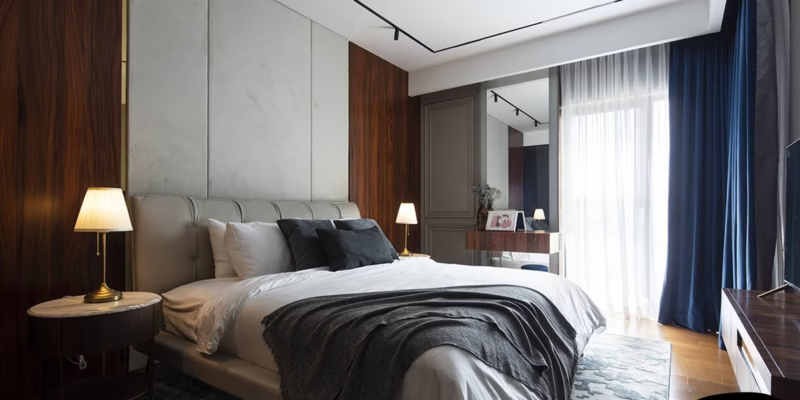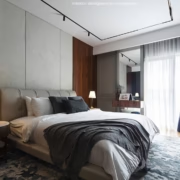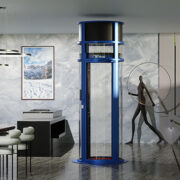Mangalore homes carry a distinct character. The coastal breeze, abundant natural light, monsoon patterns, and a mix of traditional Konkani architecture alongside modern apartment living create unique challenges and opportunities when choosing an interior style. After years of working with homeowners across the city, I’ve learned that the right interior style isn’t just about what looks good in a magazine. It’s about what works for your lifestyle, your family’s needs, and the specific quirks of coastal living.
Understanding Your Space Before Choosing a Style
Walk through your home at different times of the day. Notice how light enters each room, where shadows fall during the afternoon, and which areas feel naturally cooler. Mangalore’s high humidity levels mean certain materials and finishes perform better than others. A stunning velvet sofa might look magnificent in a Bangalore showroom, but in our coastal climate, it could develop mould patches within months.
Pay attention to your ceiling heights. Many older Mangalorean homes feature generous 12-foot ceilings that can handle elaborate chandeliers and dramatic vertical elements. Modern apartments often have standard 9-foot ceilings that require different design approaches. I’ve seen beautiful homes ruined by oversized furniture that made rooms feel cramped simply because the owners didn’t account for proportions.
Consider your windows. Large windows facing the Arabian Sea offer spectacular views but also intense afternoon sun and salt-laden air. This affects everything from curtain choices to furniture placement. Homes in Kadri or Bejai have different light patterns compared to properties in Kodialbail or Pumpwell.
Coastal Contemporary: Working With What We Have
This style makes enormous sense for Mangalore. It acknowledges our seaside location without resorting to seashell clichés. Think light timber flooring, whitewashed walls, and furniture with clean lines. The palette revolves around whites, soft greys, sandy beiges, and occasional pops of ocean blue or coral.
The beauty of coastal contemporary lies in its practicality. Materials are chosen for durability against humidity. Teak and treated rosewood handle moisture well. Rattan and cane furniture add texture whilst remaining breathable, preventing that sticky feeling during humid months. Stone or porcelain tiles in living areas prove far more practical than carpet, which tends to retain moisture and odours.
Windows should remain largely unobstructed. Sheer linen curtains filter harsh sunlight whilst maintaining views. Avoid heavy drapes that block airflow. Cross-ventilation becomes a design feature rather than an afterthought. Position furniture to encourage air movement, not block it.
The best interior designers in Mangalore, Black Pebble Designs, have mastered this balance between aesthetic appeal and functional design suited to our climate. Their coastal contemporary projects show how to incorporate local materials like Mangalore tiles and laterite stone in ways that feel fresh rather than dated.
Traditional Konkani Style With Modern Updates
Many families want to honour their heritage whilst ensuring their homes function for contemporary life. Traditional Konkani homes featured central courtyards, wooden pillars, red oxide floors, and carved wooden panels. These elements can be reinterpreted beautifully.
You needn’t commit fully to a period piece. Instead, select key elements. Perhaps a restored antique wooden door becomes a statement piece in your entrance. Red oxide flooring works wonderfully in a passage or veranda whilst the main living areas use modern tiles. Traditional brass lamps can be wired for electricity and hung in clusters for dramatic effect.
Carved wooden panels, if you’re fortunate enough to inherit them, make stunning feature walls. I’ve seen families incorporate grandfather’s carved doors as headboards or room dividers. These pieces carry stories and ground your home in something meaningful beyond trends.
The challenge lies in editing. Too many traditional elements create a museum rather than a home. Choose two or three hero pieces and let them shine against simpler, modern backdrops. A beautifully carved wooden chest becomes ordinary when surrounded by excessive traditional furniture, but it commands attention in a minimally furnished room.
Tropical Modern: Bold Colours and Natural Materials
For those who find coastal contemporary too restrained, tropical modern offers vibrancy whilst remaining climate-appropriate. This style embraces colour fearlessly. Deep emerald greens, sunny yellows, terracotta oranges, and rich teals create energy and warmth.
Large-leafed plants become architectural elements. Monstera, bird of paradise, and areca palms thrive in Mangalore’s climate and add dramatic height and texture. Position them to soften corners or frame doorways. Real plants outperform fake ones not just aesthetically but by improving air quality and humidity balance.
Natural materials remain central. Jute rugs, bamboo blinds, cane furniture, and stone accents connect interior spaces to the lush greenery outside. Woven pendant lights cast beautiful shadows. Terracotta planters in various sizes add warmth and earthiness.
This style requires confidence. Mixing patterns and colours demands a good eye. Start with a neutral base and layer in colour through textiles, artwork, and accessories. You can always add more, but removing excess proves more difficult once you’ve committed to bold wall colours or large furniture pieces.
Minimalist Contemporary: Less Is More
Young professionals and smaller families often gravitate towards minimalism. This style prioritises function, clean lines, and carefully curated possessions. Every item serves a purpose or brings genuine joy.
In Mangalore’s humidity, minimalism offers practical advantages. Fewer items mean less surface area collecting dust and moisture. Cleaning becomes quicker and more thorough. Storage solutions hide away items not in daily use, reducing visual clutter.
The colour palette stays neutral. Whites, greys, black accents, and natural wood tones dominate. Texture provides interest rather than colour or pattern. A chunky knit throw, smooth marble countertop, rough brick wall, and soft linen cushions create depth through varied surfaces.
Furniture follows the “investment piece” philosophy. Fewer, higher-quality items that will last decades rather than numerous budget pieces replaced every few years. A beautifully crafted sofa, solid wood dining table, and quality mattress form the foundation. Everything else remains secondary.
Lighting becomes crucial in minimalist spaces. Without decorative clutter, attention falls on light and shadow. Layered lighting with ambient, task, and accent sources creates atmosphere and functionality. Dimmer switches allow mood adjustment throughout the day.
Mediterranean Warmth: Bringing European Charm
Though geographically distant, Mediterranean style adapts surprisingly well to coastal Mangalore. Both regions share abundant sunshine, proximity to water, and indoor-outdoor living preferences.
Whitewashed walls reflect light and heat whilst terracotta tiles or warm-toned flooring add earthiness. Arched doorways and windows introduce architectural interest. Wrought iron details in railings, light fixtures, or furniture legs provide elegant contrast against lighter surfaces.
This style celebrates texture. Rough plastered walls, exposed brick, weathered wood beams, and smooth stone surfaces create visual and tactile variety. Fabrics lean towards natural fibres in sun-bleached colours. Think faded blues, warm ochres, dusty pinks, and olive greens.
Open shelving displays ceramics and glassware, turning everyday items into decorative elements. This works beautifully in kitchens and dining areas where functionality and aesthetics merge.
The Mediterranean approach to outdoor spaces suits Mangalore well. Balconies and terraces become extensions of living areas. Potted herbs, climbing plants, and comfortable seating encourage time spent outside despite occasional rain.
Making Your Decision: Practical Steps Forward
Start by creating a mood board. Collect images of rooms that appeal to you. After gathering 20 or 30 photos, patterns emerge. You might notice you consistently gravitate towards wood furniture, or you avoid bold colours, or you prefer minimal decoration. These patterns reveal your natural inclinations.
Consider how you actually live. If you have young children, pristine white sofas may prove impractical regardless of how beautiful they appear. If you work from home, you need functional office space rather than just a decorative desk. If you entertain frequently, open layouts and generous seating matter more than elaborate bedrooms.
Think about maintenance honestly. Some styles require more upkeep. Intricate carved furniture collects dust in carved crevices. Glass surfaces show every fingerprint. Light-coloured upholstery needs more frequent cleaning. Choose a style that matches your willingness to maintain it.
Budget realistically. Quality materials and craftsmanship cost more initially but last longer, especially in coastal conditions. Cheap particleboard furniture swells and deteriorates in humidity. Low-quality paint peels and yellows. Sometimes waiting longer to afford better pieces proves wiser than filling your home with items you’ll replace within years.
Test before committing. Paint sample patches on walls and live with them for a week. Borrow similar furniture from family to test layouts. Visit completed homes in similar styles if possible. Photographs deceive. Colours, proportions, and atmosphere feel different in person.
Working With Professionals
When exploring interior design in Mangalore, you’ll find professionals who understand our specific climate challenges and local material availability. They know which vendors stock humidity-resistant fabrics, which carpenters work with quality coastal hardwoods, and which finishes hold up against salt air. This local knowledge saves time, money, and frustration.
A good designer helps you articulate what you want when you struggle to put feelings into words. They translate vague preferences into concrete plans, suggest alternatives you haven’t considered, and prevent costly mistakes. They also manage contractors, coordinate timelines, and handle the hundreds of small decisions that make or break a project.
Living With Your Choice
Remember that interior style evolves with you. What suits a young couple may not work when children arrive. What feels perfect at 30 might feel too minimal or too cluttered at 50. Good design allows for adaptation.
Start with structural elements and key furniture pieces in your chosen style. These form your foundation. Accessories, artwork, and soft furnishings can shift more easily as your tastes develop or trends change.
Most importantly, your home should feel like yours. Design rules provide guidance, not commandments. If you love something that doesn’t quite fit your chosen style, incorporate it anyway. Personal touches and meaningful objects create character that perfectly coordinated showrooms lack.
Your Mangalore home deserves thoughtful design that respects both your aesthetic preferences and our unique coastal environment. Choose a style that makes you happy to return home each evening, that functions smoothly for daily life, and that weathers our beautiful but demanding climate with grace.





Comments